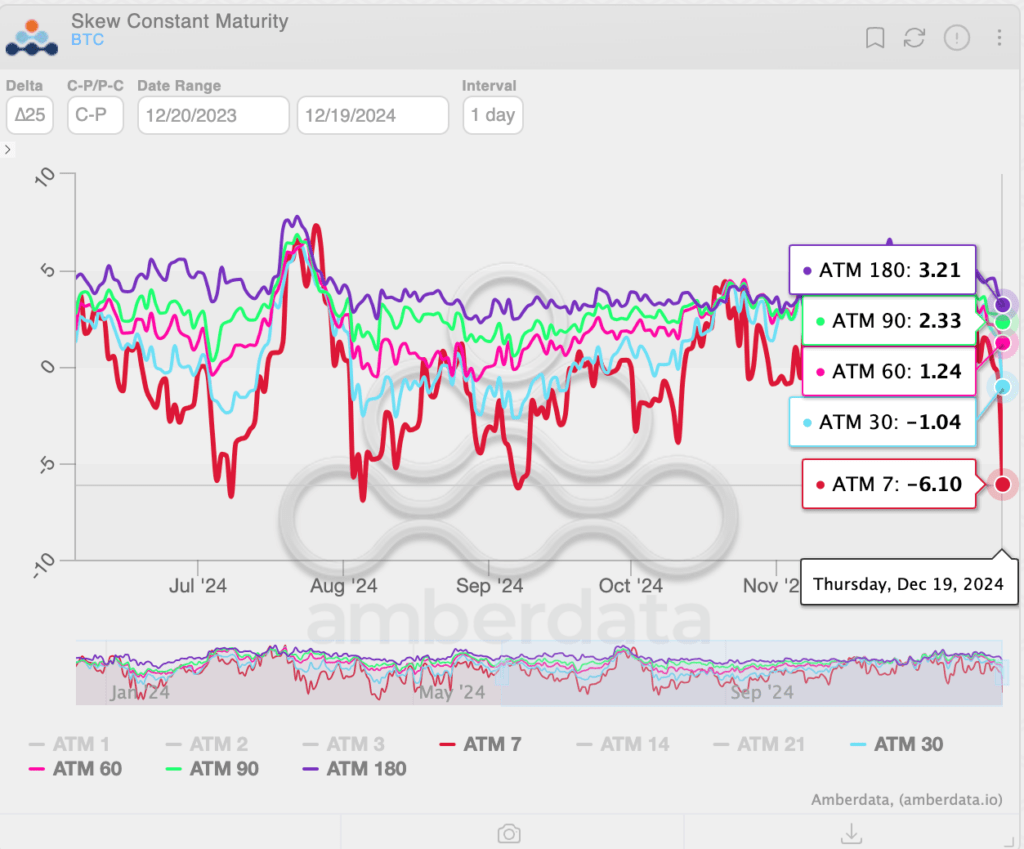Crypto traders’ initial concerns about a hawkish Fed materialized Wednesday when Chairman Jerome Powell cut interest rates but expressed uncertainty about the speed and extent of future easing. And now the sentiment has deteriorated.
Bitcoin’s seven-day put and call bias shows that Deribit-listed puts offering downside protection and expiring within a week are trading at the highest implied volatility premium to calls since September, according to data source Amberdata. In other words, put options are the most expensive relative to call options in three months.
It’s a sign that traders are scrambling to hedge their bullish bets against a possible continuation of Wednesday’s price decline, triggered by a hawkish Fed.
The harsh sentiment is also evident in the negative one-month bias, which reflects a bias for puts and a significantly weaker buy bias in options ranging from two to six months. These calls were trading at a 3 volume premium to puts at the time of this publication, down from the 4 to 5 volume premium seen earlier this month.
On Wednesday, the Federal Reserve cut the benchmark interest rate by 25 basis points to the 4.25% to 4.5% range. That’s 100 basis points below September levels when the easing cycle began.
Bitcoin fell following the rate cut as Federal Reserve Chair Jerome Powell described it as a close decision and emphasized caution regarding future moves as rates approach the neutral level.
Powell also said that the Federal Reserve has no intention of participating in any government plan to create a strategic bitcoin reserve, adding that board members have no intention of pushing for changes to Federal Reserve law. This comes after President-elect Trump’s recent mention that his administration would consider establishing a BTC reserve similar to the country’s oil reserves.
Meanwhile, the dot plot, an anonymous graphical representation of where the committee’s 19 members project the fed funds rates will be in the future, pointed to just two rate cuts in 2025 instead of the expected three and compared to the fourth of September.
The dot plot essentially outperformed the markets, causing risk assets to fall. While the Dow Jones ended with a loss of 2.5% or more than 1,000 points, BTC fell from around $105,000 to less than $99,000, according to data source TradingView and CoinDesk.
At the time of writing, BTC is trading at around $101,200, aiming to recover from overnight losses.
Meanwhile, the dollar index, which measures the value of the dollar against major currencies, continues to maintain its overnight gains, holding steady near 108, the highest level since October 2022. Persistent dollar strength could exacerbate the problems of risky assets.




